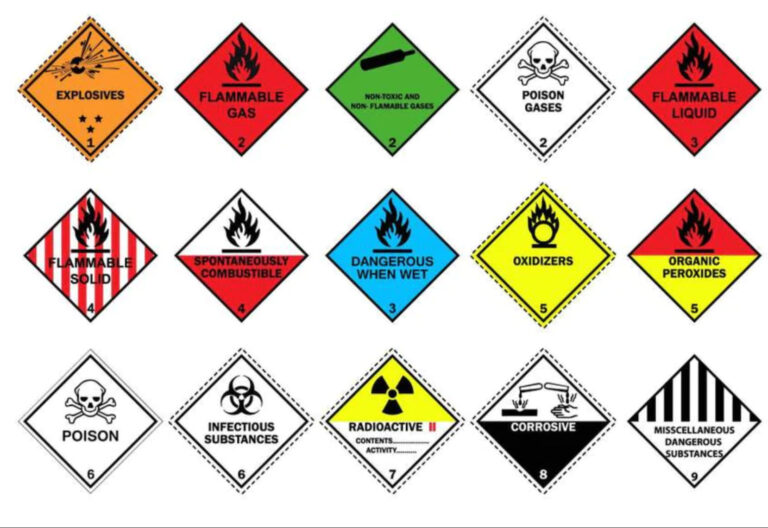The GHS Labels Market is steadily advancing and is projected to attain a value of US$ 2.3 billion by 2030, exhibiting a Compound Annual Growth Rate (CAGR) of 4.8% from 2022 to 2030. Over the forecast period, the market is expected to demonstrate consistent growth, culminating in a significant valuation by the end of the decade. This progression underscores the increasing importance and adoption of GHS labels across various industries worldwide. The steady upward trajectory reflects the ongoing demand for compliant labeling solutions and the continuous emphasis on safety regulations and standards within the global market landscape.
Furthermore, the imperative need for appropriately labeling hazardous substances, complete with vital instructions for safe handling and transportation, is fostering a widespread embrace of GHS labels among manufacturers. The market is propelled by technological advancements, evolving packaging objectives, and the versatile applicability of GHS labels, collectively steering the industry towards sustained growth.
Germany stands out as a promising market for GHS labels, poised to surpass its European counterparts due to robust production capacities. Future Market Insights (FMI) analysis forecasts that Germany’s GHS labels market is anticipated to reach a valuation of US$ 51.9 million, commanding a substantial 15% market share by the year 2030. This underscores Germany’s significant role in the regional landscape, reflecting both the nation’s industrial prowess and the heightened emphasis on hazard communication and safety standards within the country.
Request Sample Report: https://www.futuremarketinsights.com/reports/sample/rep-gb-9942
Market Drivers:
- Regulatory Compliance Requirements: The foremost driver for the GHS labels market is the stringent regulatory requirements imposed by various governments and international bodies. Compliance with GHS standards is mandatory in many countries to ensure proper handling, transportation, and communication of hazardous chemicals.
- Safety Concerns: Growing awareness about workplace safety and environmental protection is driving the demand for clear and standardized labeling of hazardous substances. GHS labels play a crucial role in mitigating risks associated with chemical handling and storage.
- Global Trade: With an increase in global trade of chemicals and products containing hazardous materials, there’s a corresponding rise in the need for standardized labeling to facilitate safe handling and transportation across borders.
- Industry Growth: The expansion of industries such as chemicals, pharmaceuticals, manufacturing, and agriculture fuels the demand for GHS labels. These sectors require compliant labeling for their products to ensure regulatory adherence and safety.
- Technological Advancements: Advancements in printing technologies, such as digital printing and variable data printing, have made it easier and more cost-effective to produce customized GHS labels in smaller quantities, catering to diverse labeling needs.
- Increased Awareness: Heightened awareness among businesses, employees, and consumers regarding the importance of hazard communication and the significance of GHS labels drives the market growth.
Market Restraints:
- Cost Constraints: Implementing GHS labeling systems can entail significant initial costs, including label design, printing equipment, training, and compliance audits. For smaller businesses or those operating on tight budgets, these expenses can act as a barrier to adoption.
- Complexity and Standardization Challenges: The complexity of GHS labeling requirements, including the need to accurately classify chemicals, adhere to specific label elements, and ensure multilingual labeling, can pose challenges for companies, particularly those operating across multiple jurisdictions with varying regulations.
- Resistance to Change: Some businesses may resist transitioning to GHS labeling due to inertia, reluctance to change existing labeling systems, or concerns about disruptions to operations during the transition period.
- Risk of Non-Compliance: Failure to comply with GHS labeling regulations can result in severe penalties, including fines, legal liabilities, and damage to reputation. However, navigating the complexities of regulatory compliance can be daunting for companies, especially smaller ones with limited resources and expertise.
- Supply Chain Disruptions: Global supply chain disruptions, such as those caused by natural disasters, geopolitical tensions, or pandemics, can impact the availability of raw materials, printing supplies, and logistics services required for GHS label production and distribution.
- Environmental Concerns: The production and disposal of GHS labels, particularly those made from non-recyclable materials or containing hazardous substances, can raise environmental concerns and trigger demands for more sustainable labeling solutions.
Key Takeaways of GHS Labels Market Study
- After a period of negative growth, GHS labels sales well improve marginally, registering a 0.2% y-o-y growth in terms of value in 2022
- Expansion of chemicals sector will boost growth in the U.S., enabling it to hold 87% share in the North America market in 2022
- The U.K. will register negative y-o-y growth in 2021, however, sales are poised to improve 2022 onwards
- Germany will record positive growth in sales in 2021, however, sales in France will recover 2022 onwards
- Increasing production and export of chemicals has placed China as the dominant market in East Asia, followed by Japan and South Korea
Competitive Landscape
Some of the leading manufacturers of GHS labels are focusing on product innovations to make their products stand out from others. Manufacturers are specializing in short lead times, fast turn-around, and production of GHS labels in small quantities.
- In 2020, Avery Dennison acquired Smartrac’s RFID transponder business.
- Herma GmbH introduced BPA-free thermal labels in June 2019.
Competitive Landscape
- Avery Dennison Corporation
- UPM Raflatac
- PPG Industries, Inc.
- Brady Worldwide, Inc.
- 3M Company
- CCL Industries Corp.
- Reliance Label Solution, Inc.
- HERMA GmbH
- Weber Packaging Solutions, Inc.
- SATO AMERICA, LLC
- Brandywine Drumlabels, LLC
- TCI America, Inc.
- Loftware, Inc.
- Nippon Shokubai America Industries, Inc.
- Teklynx Newco SAS
“Besides implementation of stringent regulations, requiring the chemical sector to clearly state potential hazards, focus on preventing counterfeiting of products will give tailwinds to growth registered by the market,” said a lead analyst at FMI.
Buy Now/Purchase: https://www.futuremarketinsights.com/checkout/9942
Key Segmentations:
by Product Type
- Pre-printed
- Personalized (On-demand)
by Material
- Polypropylene (PP)
- Polyethylene (PE)
- Polyester (PET)
- Polyimide
- Vinyl
- White Thermal Transfer/Direct Thermal Paper
by Size
- 215mm x 279mm
- 215mm x 355mm
- 210mm x 297mm
- 148mm x 210mm
- Any Other Label Size
Packaging Format
- Primary Containers
- Secondary Containers
Printing Technology
- Thermal Transfer
- Pigmented Ink Jet
- Color Laser
by End-use
- Manufacturers
- Logistic & Transport Companies
About Future Market Insights (FMI)
Future Market Insights, Inc. (ESOMAR certified, recipient of the Stevie Award, and a member of the Greater New York Chamber of Commerce) offers profound insights into the driving factors that are boosting demand in the market. FMI stands as the leading global provider of market intelligence, advisory services, consulting, and events for the Packaging, Food and Beverage, Consumer, Technology, Healthcare, Industrial, and Chemicals markets. With a vast team of over 5000 analysts worldwide, FMI provides global, regional, and local expertise on diverse domains and industry trends across more than 110 countries.
Contact Us:
Future Market Insights Inc.
Christiana Corporate, 200 Continental Drive,
Suite 401, Newark, Delaware – 19713, USA
T: +1-845-579-5705
For Sales Enquiries: sales@futuremarketinsights.com
Website: https://www.futuremarketinsights.com
LinkedIn| Twitter| Blogs | YouTube





